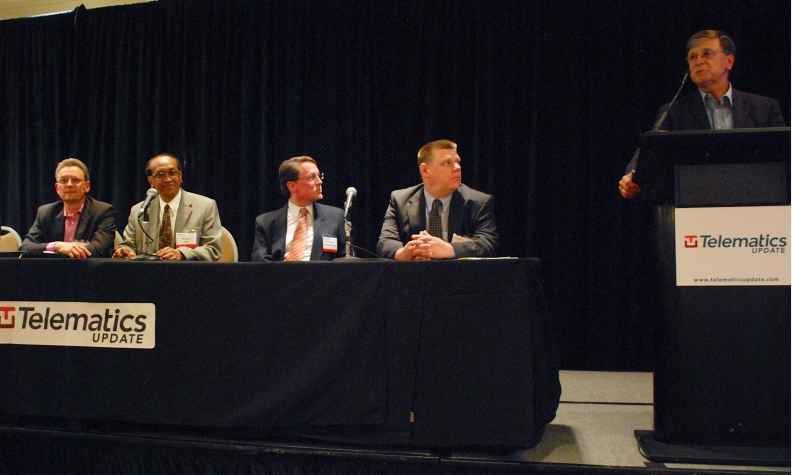NOVI, Mich. -- The road to the connected highway -- where cars communicate with each other, some autonomously, to ease traffic congestion, improve safety, reduce pollution, among other things -- will require huge investments in infrastructure and a commitment from automakers and suppliers to equip vehicles with the technology, a panel of experts said Tuesday.

And before the connected car can become widely commercialized, automakers and consumers have to be sold on the economic benefits of the concept.
Four leaders in the automotive, telecommunications, and technology industries gathered at the Telematics Update Vehicle-to-Vehicle and Vehicle-to-Infrastructure for Auto Safety conference here on Tuesday to discuss how to encourage the widespread implementation of "dedicated short-range communication," or DSRC.
The cars-only wi-fi frequency allows vehicles to warn each other about hazards and exchange information.
Among the major hurdles: No company or agency has adequate funds to pay for the infrastructure needed to support the technology and begin mass implementation. And if you can't convince people that they need vehicle-to-vehicle technology, the technology won't be worth it.
There will be fewer benefits if fewer light vehicles are equipped with such technology, several panelists warned.
Tim Johnson, global business development manager for Sprint Velocity, the automotive arm of the telecommunications company, said customers should be willing to pay for the technology because it can reduce transit time, making driving more efficient and reducing emissions at at the same time.
Still, as it has been with a lot of new light-vehicle technology, most consumers won't be willing to pay extra money for the benefit of owning and driving a connected minivan or SUV.
More economic benefits
Drue Freeman, senior vice president of global automotive sales and marketing at semiconductor manufacturer NXP, said while the social benefits of the connected car are clear, developers must find more direct economic benefits to spur interest and investment in the systems.
Safety features such as emergency electronic brake lights, in which a signal alerts nearby vehicles that a car has suddenly braked, can save lives. But consumers and must see the economic benefit of implementing such systems, Freeman said.
Saving a life decreases insurance claims, allowing insurers to save money on payouts, thereby reducing insurance premiums and lowering consumer costs.
"We have to look for more mundane uses and cases of application," said Andreas Mai, head of the North American automotive segment at networking firm Cisco Systems.
Personal reasons
Paul Gray, CEO of hardware manufacturer Cohda Wireless, noted that consumers will want more personal reasons for purchasing a connected car.
He pointed to San Francisco, where traffic lights will soon have the capability to hold a green signal when municipal buses approach an intersection to make transit routes more efficient.
Heri Rakouth, director of technology exploration for Delphi Corp., argued that the technology is more attractive if companies focus on the Internet connectivity and infotainment aspects of potential products, not safety.
"For me, safety is the business of the government," Rakouth said.
Pay to miss traffic
Consumers value advanced air bags and safety features, Johnson said, and Mai argued that consumers value speed and would therefore pay for the ability to circumvent traffic.
"I would actually pay for being able to drive to Chicago in the middle of the night at 200 mph," Mai joked.
In Washington last month, automakers showed off the latest prototype vehicles that use DSRC.
Engineers at the Washington event and panelists on Tuesday noted that automakers and suppliers will have to work together to build a universal, macro network for connected cars.
